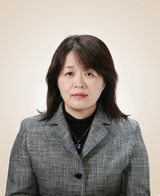
Nakano, Hiromi
| Affiliation | Cooperative Research Facility Center |
|---|---|
| Concurrent post | Center for Diversity and Inclusion Department of Applied chemistry and Life Science |
| Title | Professor |
| Fields of Research | Inorganic materials, Structural analysis |
| Degree | Dr. of Engineering (Toyohasi University of Technology) |
| Academic Societies | Member of Science Council of Japan/The Ceramic Society of Japan/The Society of Powder Technology, Japan/Japanese Society of Microscopy/The Society of Materials Science, Japan/The Japan Society of Applied Physics/ |
| hiromi@crfc Please append ".tut.ac.jp" to the end of the address above. |
|
| Laboratory website URL | https://crfc.tut.ac.jp/nakano/index.html |
| Researcher information URL(researchmap) | Researcher information |
Theme1:Synthesis of new oxide phosphors and clarification of mechanism for relationship between property and crystal structure
Overview
1. Synthesis of new phosphors by solid-phase reaction and liquid-phase-reaction
2. Design and synthesis for new phosphor by controlling of composition and crystal structure
3. Application of red phoshpor Li-Ta-Ti-O:Eu excited by 400 nm
4. Relationship between crystal structure and photoluminescence
Grant-in-Aid for Scientific Research No. 16K06721 from the Japan Society for the Promotion of Science)
Keywords
Theme2:Microstructure and mechanical property of metallic materials controlled by metallographic-structure and -phases
Overview
We are investigating metallic films with a nano-lamellar structure or porous metals. TEM observations and simulations by molecular dynamics and first-principles analysis are used to study the mechanism of metallic materials’ physical properties.
This investigation is being pursued in collaboration with Kyoto University (Mabuchi Lab.).
Keywords
Theme3:Anisotropic structure and property in oriented bulk ceramics
Overview
In this work, as a first step toward application of the unique qualities of an electro-ceramic with an anisotropy structure, we prepared an oriented LNT balk ceramic by slip casting in a strong magnetic field of 12 T. The direction of the magnetic field was parallel to the casting direction. The obtained specimen was analyzed by X-ray diffraction, scanning electron microscope, and transmission electron microscope. Consequently, the c-axis of the LNT powders was aligned parallel to the magnetic field and a high orientation degree was achieved in a strong magnetic field of 12 T.

